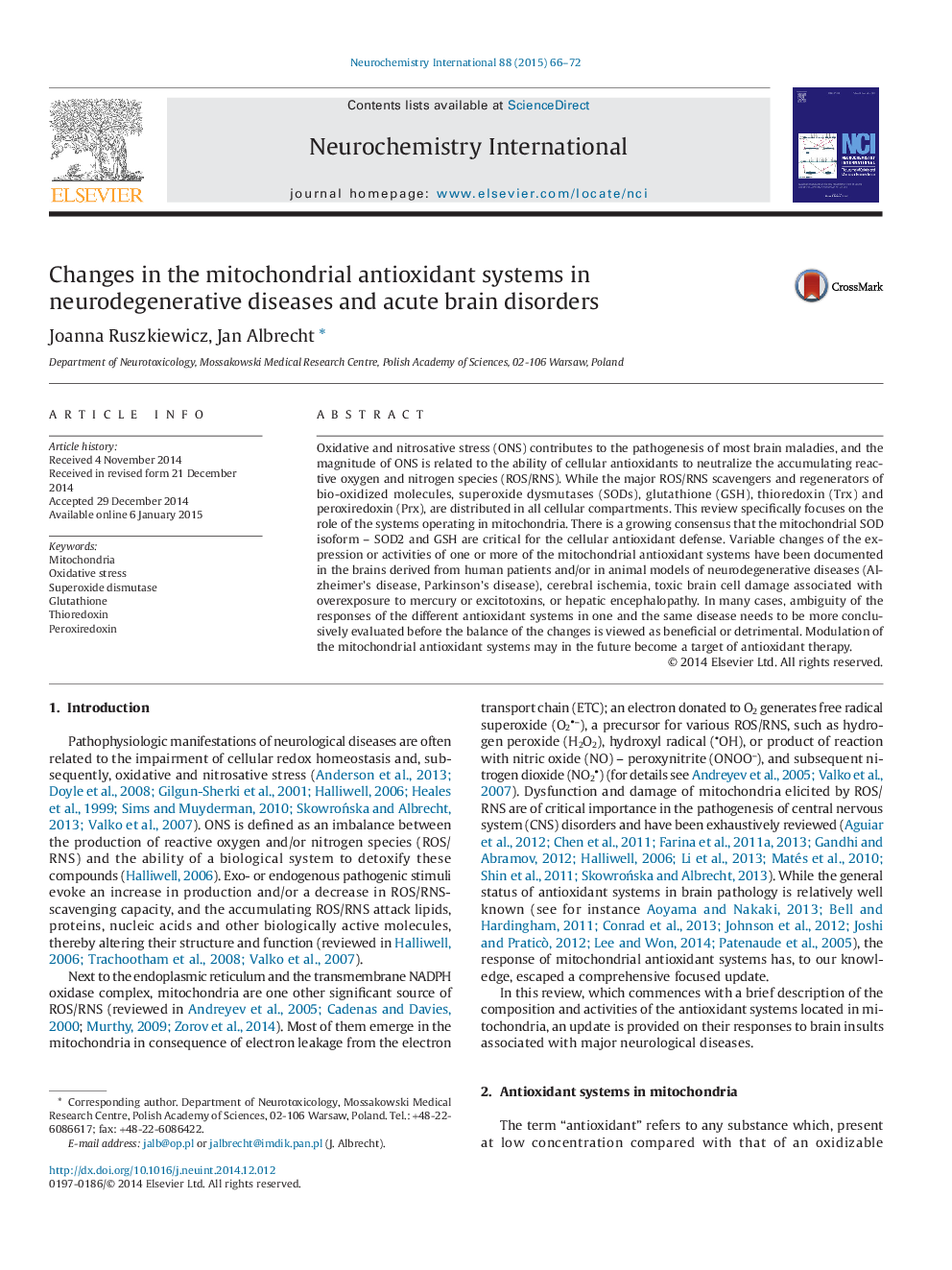| Article ID | Journal | Published Year | Pages | File Type |
|---|---|---|---|---|
| 2200460 | Neurochemistry International | 2015 | 7 Pages |
•Mitochondrial antioxidant systems (MAS) roughly mirror systems present in cytoplasm.•Mitochondrial SOD2 and GSH are critical for brain response to oxidative stress (OS).•MAS may variably compensate or aggravate OS in neurological syndromes (NS).•Pharmacological modulation of MAS shows promise as treatment modality of NS.
Oxidative and nitrosative stress (ONS) contributes to the pathogenesis of most brain maladies, and the magnitude of ONS is related to the ability of cellular antioxidants to neutralize the accumulating reactive oxygen and nitrogen species (ROS/RNS). While the major ROS/RNS scavengers and regenerators of bio-oxidized molecules, superoxide dysmutases (SODs), glutathione (GSH), thioredoxin (Trx) and peroxiredoxin (Prx), are distributed in all cellular compartments. This review specifically focuses on the role of the systems operating in mitochondria. There is a growing consensus that the mitochondrial SOD isoform – SOD2 and GSH are critical for the cellular antioxidant defense. Variable changes of the expression or activities of one or more of the mitochondrial antioxidant systems have been documented in the brains derived from human patients and/or in animal models of neurodegenerative diseases (Alzheimer's disease, Parkinson's disease), cerebral ischemia, toxic brain cell damage associated with overexposure to mercury or excitotoxins, or hepatic encephalopathy. In many cases, ambiguity of the responses of the different antioxidant systems in one and the same disease needs to be more conclusively evaluated before the balance of the changes is viewed as beneficial or detrimental. Modulation of the mitochondrial antioxidant systems may in the future become a target of antioxidant therapy.
